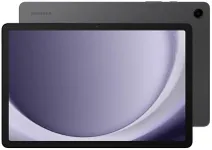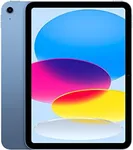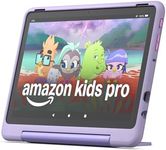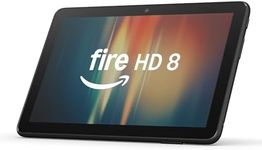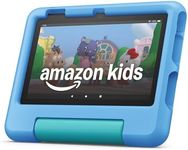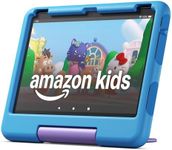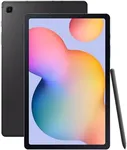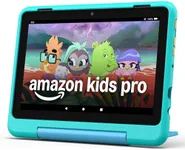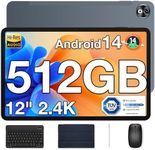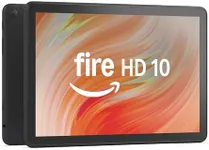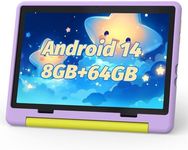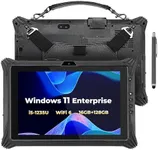Buying Guide for the Best Tablets
Choosing the right tablet can greatly enhance your digital experience, whether it's for work, entertainment, or education. To make an informed decision, it's important to understand the key specifications and how they align with your needs. Here are the main specs to consider when selecting a tablet, along with explanations to help you navigate through them.Screen SizeScreen size is the diagonal measurement of the tablet's display, usually measured in inches. This spec is important because it affects the portability and usability of the device. Smaller screens (7-8 inches) are more portable and easier to hold with one hand, making them ideal for reading and casual browsing. Medium screens (9-10 inches) offer a balance between portability and a comfortable viewing experience, suitable for watching videos and light productivity tasks. Larger screens (11 inches and above) provide a more immersive experience and are better for multitasking, professional work, and creative tasks like drawing. Choose a screen size based on how you plan to use the tablet and how portable you need it to be.
ResolutionResolution refers to the number of pixels on the screen, typically expressed as width x height (e.g., 1920x1080). Higher resolution means more pixels, resulting in sharper and clearer images. This spec is important for activities like watching videos, reading, and gaming. Standard resolution (around 1280x800) is sufficient for basic tasks and casual use. Full HD resolution (1920x1080) offers a better viewing experience for videos and detailed content. Higher resolutions (above 2560x1600) are ideal for professional work, graphic design, and high-quality media consumption. Consider your primary use case and how much you value screen clarity when choosing the resolution.
ProcessorThe processor, or CPU, is the brain of the tablet, determining how fast and efficiently it can run applications and perform tasks. This spec is crucial for overall performance. Entry-level processors are suitable for basic tasks like web browsing, social media, and streaming. Mid-range processors offer better performance for multitasking, gaming, and more demanding apps. High-end processors provide the best performance for professional work, intensive gaming, and creative applications like video editing. Think about the types of activities you'll be doing on your tablet and choose a processor that can handle those tasks smoothly.
RAMRAM (Random Access Memory) is the tablet's short-term memory, which helps it run multiple applications simultaneously and switch between them smoothly. More RAM allows for better multitasking and faster performance. Tablets with 2-3GB of RAM are adequate for basic use and light multitasking. 4-6GB of RAM is suitable for moderate multitasking, gaming, and running more demanding apps. Tablets with 8GB or more RAM are ideal for heavy multitasking, professional work, and running resource-intensive applications. Consider how many apps you typically use at once and how demanding those apps are when deciding on the amount of RAM.
StorageStorage refers to the amount of space available for your apps, files, photos, and videos. This spec is important for managing your data and ensuring you have enough room for everything you need. Tablets with 32GB of storage are suitable for basic use with a few apps and media files. 64-128GB of storage is better for users who download more apps, store more media, and need extra space for documents. Tablets with 256GB or more storage are ideal for heavy users, professionals, and those who store large files like videos and high-resolution photos. Consider your storage needs based on how you plan to use the tablet and whether you can expand storage with a microSD card.
Battery LifeBattery life indicates how long the tablet can run on a single charge, usually measured in hours. This spec is important for portability and convenience, especially if you use the tablet on the go. Tablets with 6-8 hours of battery life are sufficient for casual use and short trips. 8-10 hours of battery life offer a good balance for most users, providing enough power for a full day of use. Tablets with 10+ hours of battery life are ideal for heavy users, travelers, and those who need extended usage without frequent charging. Think about how often you'll be using the tablet away from a power source and choose a battery life that meets your needs.
Operating SystemThe operating system (OS) is the software platform that runs the tablet and determines its user interface, app compatibility, and overall experience. The main tablet operating systems are iOS (Apple), Android (Google), and Windows (Microsoft). iOS is known for its smooth performance, security, and extensive app ecosystem, making it a good choice for users who value a seamless experience and access to a wide range of apps. Android offers more customization options, a variety of hardware choices, and integration with Google services, suitable for users who prefer flexibility and personalization. Windows tablets provide a desktop-like experience with support for traditional software, ideal for productivity and professional use. Consider which OS aligns with your preferences, existing devices, and the types of apps you need.
ConnectivityConnectivity options determine how the tablet can connect to the internet and other devices. This spec is important for staying connected and accessing online content. Wi-Fi-only tablets are suitable for users who primarily use the tablet at home or in places with reliable Wi-Fi. Tablets with cellular connectivity (4G/5G) offer the flexibility to access the internet on the go, ideal for travelers and users who need constant connectivity. Additionally, consider other connectivity features like Bluetooth for connecting peripherals, USB ports for external devices, and HDMI for connecting to larger displays. Think about where and how you'll be using the tablet and choose the connectivity options that best fit your lifestyle.
Camera QualityCamera quality refers to the resolution and capabilities of the tablet's front and rear cameras. This spec is important for video calls, photography, and content creation. Basic cameras (5-8MP) are sufficient for casual photos and video calls. Mid-range cameras (8-12MP) offer better quality for clearer photos and videos. High-end cameras (12MP and above) provide the best quality for professional photography and high-resolution video recording. Consider how often you'll be using the tablet's camera and for what purposes, and choose a camera quality that meets your needs.
